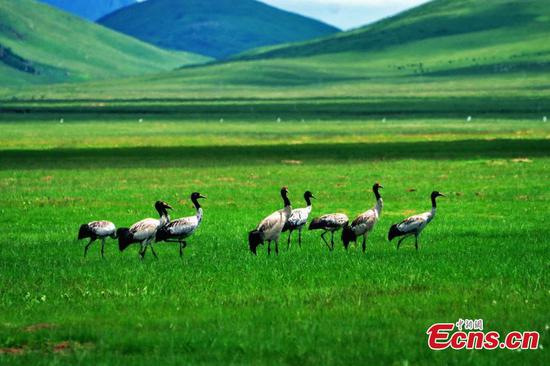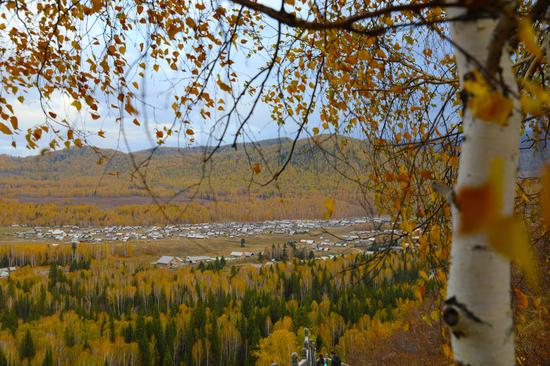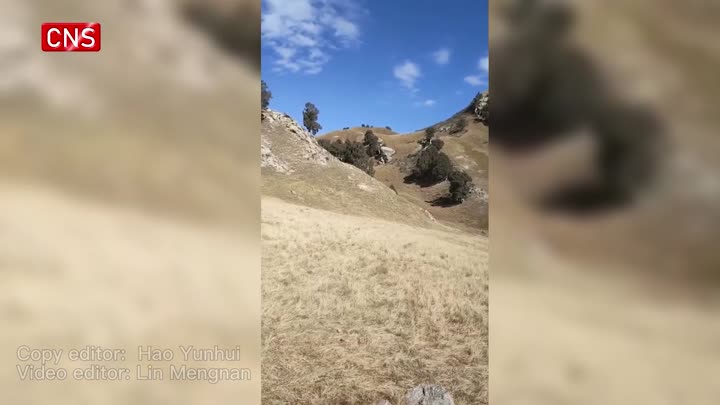Southwest China's Tibet Autonomous Region has improved the protection of natural areas and attached great significance to biodiversity protection over the past decades, said local authorities.
Tibet has formed an effective protection-and-management system of natural areas after more than 30 years of construction, the region's ecology and environment department said Wednesday in a statement.
At the end of 2020, there were 81 protected natural areas in the region, including 47 nature reserves, nine national forest parks, and 22 national wetland parks, the department said.
The region started a pilot program in 2006 to compensate farmers and herders for losses caused by wild animals to protect wildlife. It has so far paid 960 million yuan (about 149 million U.S. dollars) for such losses.
Meanwhile, a series of special law enforcement campaigns improve supervision, rectify problems, and enhance the proper management of protected natural areas.
Tibet spent 20.23 billion yuan in ecological protection from 2016 to 2020, more than doubling the spending for the previous five years, said the statement.
The funds were mainly used in projects including afforestation, wetland protection and restoration, nature reserve construction, natural forest protection, sand control, and wildlife protection.
The region has attached greater significance to biodiversity protection over the past decades. It has seen increases in both the number of species and the population of endangered species.
Thanks to special geographical conditions, the plateau is home to many unique and rare wild animals and plants.
So far, Tibet has recorded more than 9,600 kinds of wild plants, among which 1,075 are endemic to Tibet, and 383 are listed as rare and endangered species at different levels, said the department.
There are 1,072 species of wild vertebrates, and the country has put 219 kinds of wild animals under national-level protection. With the increasing protection efforts, the region is seeing more wildlife species.
In a new survey on wild animals, Tibet had identified five new species, five species newly recorded in China, and 23 species new to the region by the end of 2020.
Most wildlife species under protection saw population growth.
The population of Tibetan antelopes has surged to around 300,000 from a low of 70,000 in the last century. That of black-necked cranes has increased from approximately 2,000 last century to more than 10,000 at present, said the department.
"Through our efforts over the past years, the population of Tibetan antelopes has recovered significantly, and it has been downgraded from an 'endangered species' to a 'near threatened species,'" said Zhang Jiaping, an official with the regional forestry and grassland bureau.
However, efforts must continue to protect wild animals and plants, promote the harmonious coexistence of humanity and nature, and maintain biodiversity, Zhang added.
The Qinghai-Tibet Plateau is known as "the roof of the world." As Tibet is a vital guarantor of China's environmental security, the Chinese government attaches great importance to the region's ecological and environmental protection.


















































 京公网安备 11010202009201号
京公网安备 11010202009201号